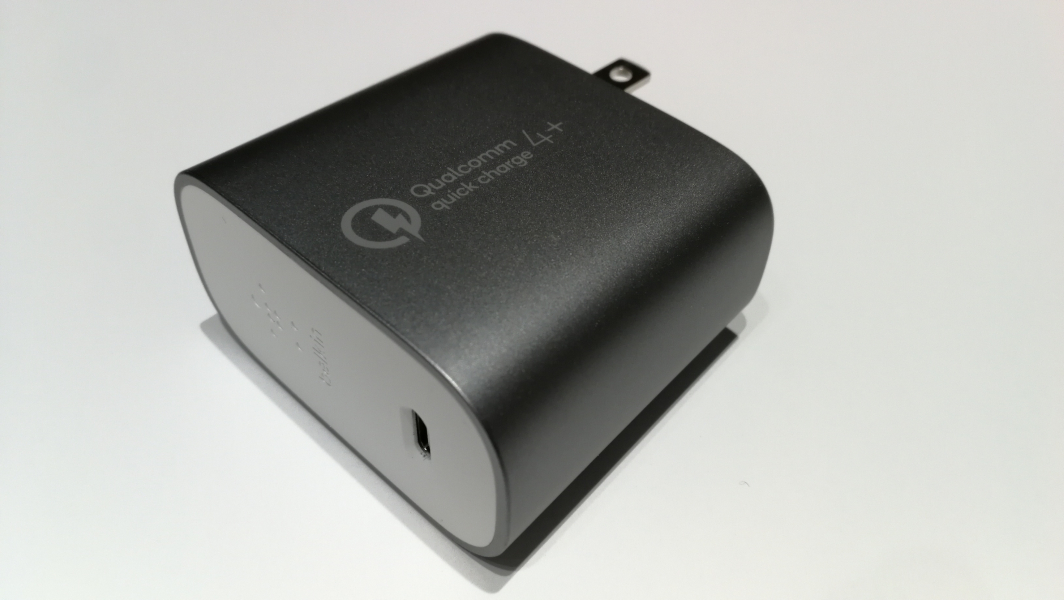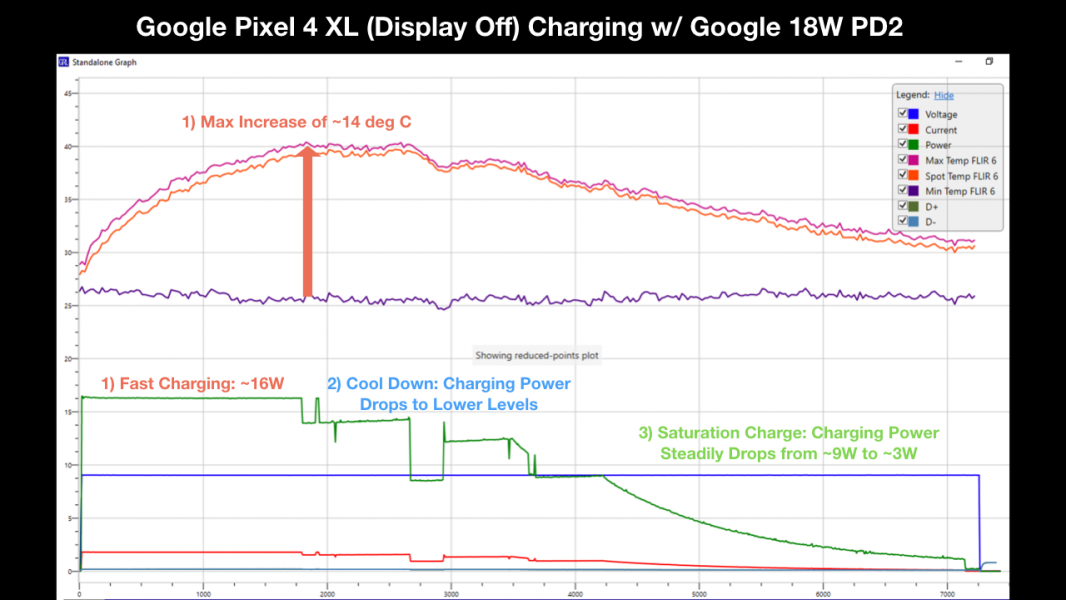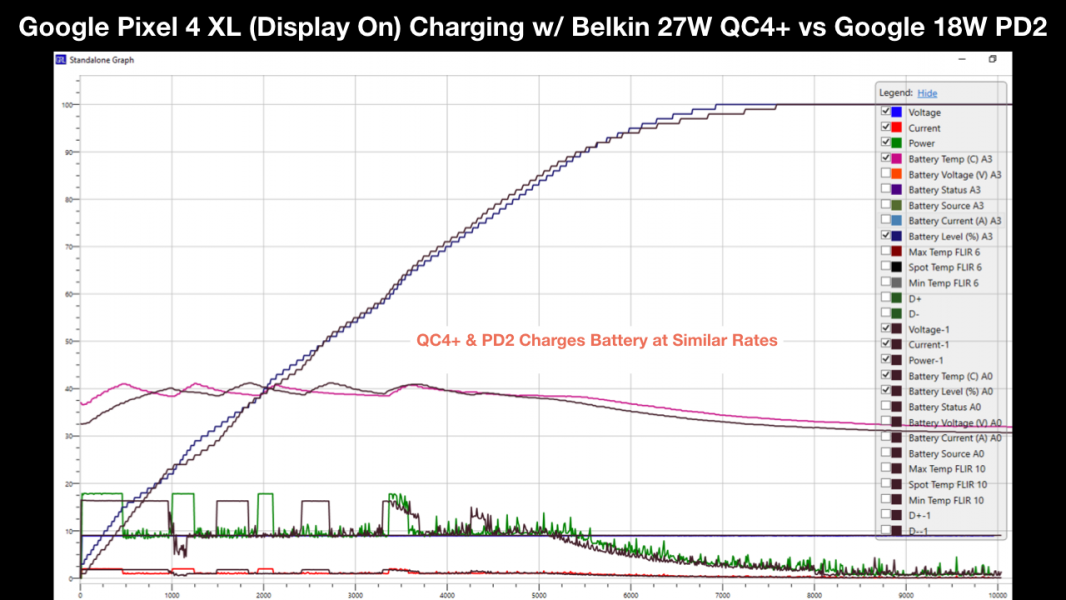Unlike phones released in the same year from Apple, Samsung and Xiaomi, the Google Pixel 4 XL has not increased its max charging power levels over USB Type-C. Like the Apple iPhone 11 Pro Max, the Google Pixel 4 XL stays with USB Power Delivery (PD) 2.0 fixed voltage technology rather than using the USB PD 3.0 based PPS technology employed by Samsung and Xiaomi.
Let’s take a closer look at how the Google Pixel 4 XL works with the Google 18W USB-C Power Adapter that shipped in-box with the phone versus the Belkin 27W QC4+ Power Adapter using USB Power Delivery technology. To demonstrate this, we use the GRL-C2 USB PD Tester and GRL-PSP Power Analyzer software from Granite River Labs to analyze the overall charging details.
First we drain the Google Pixel 4 XL to zero battery charge and with the phone and display kept off, connect the Google 18W USB-C Power Adapter. When the phone goes into an initial “Fast Charge” mode, it charges at around a constant 16W at 9V fixed voltage for about 30 minutes, after which temperature rises by 14° C. The phone then proceeds to a “Cool Down” mode where power is gradually reduced by about 3W to a 13W plateau, and then gradually reduced by about 6W to a 7W level with more current volatility but then goes back up to around 13W level. The power then gets lowered back down to about 8W while voltage remains constant at 9V before entering a "Saturation" mode. Finally, during the “Saturation” mode power steadily drops from about 9W down to about 3W with current gradually gets lowered to close to zero until the phone’s battery is 100% full.
Now let’s look at the Google Pixel 4 XL's charging behavior while the display and Wi-Fi are left active without the display going to sleep. Again, we use the phone’s own 18W charger and keep the phone drained to 2% to allow communication between the GRL Power Suite Pro and phone. This time the Google Pixel 4 XL in the “Fast Charge” mode charges at about 17W at 9V fixed voltage with again a temperature rise of 14° C.
The Google Pixel 4 XL’s subsequent “Cool Down” mode is very aggressive where charging power repeatedly drops to around 10W from 17W while the charging fixed voltage level stays at 9V.
Finally, the phone enters the “Saturation” mode when the phone’s battery % hits close to 90% where current gradually gets lowered and charging power steadily decreases from around 10W to 3W until the phone’s battery is 100% full.
Comparing the charging behavior between the Google Pixel 4 XL being off versus display on, we can see generally the total charging time to 100% battery is similar between both phone off and display on cases. Note the phone charges slightly faster and cooler when off.
We then run the same analysis using the Belkin 27W QC4+ Power Adapter to compare the Belkin 27W Qualcomm Quick Charge 4+ (QC4+) versus Google 18W PD2 chargers on the Google Pixel 4 XL for overall charging. We can definitely see that 27W max power charging with the Belkin charger using QC4+ technology does result in similar charging rates as the 18W charging with the Google charger using USB PD 2.0 technology. Both chargers can be seen to achieve 100% charging at close to the same time.
Note the Google Pixel 4 XL also displays almost similar charging behavior for different chargers that support USB Power Delivery. For example, the Belkin 27W QC4+ Power Adapter shows almost the same Google Pixel 4 XL's charging profile as the Google 18W USB-C Power Adapter.
 GTrusted
GTrusted


























